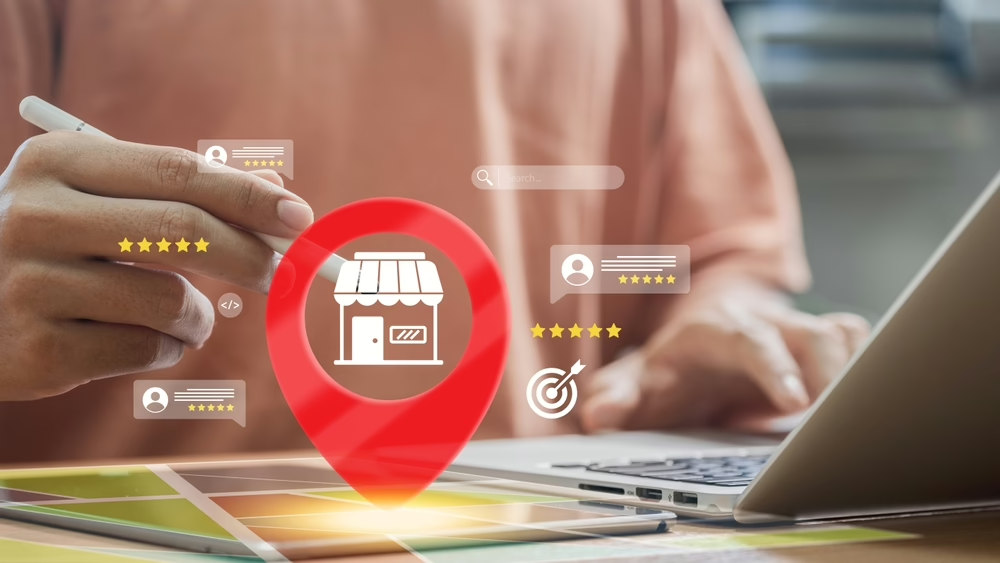
B2B Analytics: Benefits, Uses and Tips To Expand Your Market
B2B analytics uses data analysis and insights to understand and optimize business-to-business (B2B) interactions and transactions. It examines data related to customer behavior, sales performance, market trends, and other relevant metrics to help you identify patterns, make informed decisions, and drive business growth.
This guide is about the following:
 B2B analytics has many uses. It is an effective strategy for customer segmentation, demand forecasting, and pricing optimization, churn analysis, and analysis of sales forecasting. Let’s focus on these primary uses.
B2B analytics has many uses. It is an effective strategy for customer segmentation, demand forecasting, and pricing optimization, churn analysis, and analysis of sales forecasting. Let’s focus on these primary uses. Businesses can use the following B2B analytics tips to improve their marketing efforts and expand their scope.
Businesses can use the following B2B analytics tips to improve their marketing efforts and expand their scope.
- Benefits of B2B analytics
- Uses of B2B analytics
- Top B2B analytics tips to expand your market
Watch this video to find out more about how Digital Authority Partners can create a great marketing strategy for you!
Benefits of B2B Analytics
Using B2B analytics, companies can improve various aspects of their business, including decision-making, customer understanding, and operational efficiency. Let us focus on each one.1. Improved Decision-Making
With B2B analytics, businesses get valuable insights into customer behavior, market trends, and sales performance. With these insights, companies can make more informed decisions about product development, pricing strategies, marketing campaigns, and resource allocation. All these lead to better targeting of resources, reduced risks, and improved chances of success.2. Enhanced Customer Understanding
With B2B analytics, companies can better understand their customers’ needs, preferences, and purchasing patterns. Through customer data analysis, B2B businesses can identify their most valuable clients, personalize their offerings, and provide tailored solutions to meet their customers’ demands. These strengthen customer relationships and increase customer satisfaction and retention rates.3. Increased Operational Efficiency
B2B analytics can help companies identify inefficiencies and bottlenecks in various business processes. Through operational data analysis, businesses can optimize supply chain management, streamline production processes, and identify areas for cost reduction. Data gathered can improve resource utilization and order fulfillment, reduce costs, and increase profits.Uses of B2B Analytics
 B2B analytics has many uses. It is an effective strategy for customer segmentation, demand forecasting, and pricing optimization, churn analysis, and analysis of sales forecasting. Let’s focus on these primary uses.
B2B analytics has many uses. It is an effective strategy for customer segmentation, demand forecasting, and pricing optimization, churn analysis, and analysis of sales forecasting. Let’s focus on these primary uses.1. Helps With Customer Segmentation
Segmenting customers improves marketing and sales. With B2B analytics, businesses find segmenting customers easier as they generate information on industry, company size, buying behavior, and profitability criteria. Segmentation allows businesses to create marketing and sales efforts with more targeted and compelling messaging for specific customer groups.2. Improves Demand Forecasting
B2B analytics also improves demand forecasting so businesses can improve their inventory management, production planning, and resource allocation. Demand forecasting involves analyzing historical sales data, market trends, and other factors to predict future demand for products or services.3. Enhances Pricing Optimization
B2B analytics provides important data on pricing, market competition, and customer behavior. With this data, businesses can determine the correct pricing levels, discounts, and promotions to maximize revenue and profit while remaining competitive.4. Improves Sales Performance Analysis
B2B analytics tracks and analyzes sales performance metrics such as revenue by region, product, or sales team. This data identifies top-performing sales representatives, underperforming areas, or product opportunities. With this data, businesses can make better decisions to optimize their sales strategies and improve their overall performance.Top B2B Analytics Tips To Expand Your Market
 Businesses can use the following B2B analytics tips to improve their marketing efforts and expand their scope.
Businesses can use the following B2B analytics tips to improve their marketing efforts and expand their scope.1. Identify and Understand Your Target Market
B2B businesses start using analytics by conducting thorough market research to identify potential customer segments and understand their needs, preferences, and buying behaviors. Research helps them focus their efforts and resources on the right market segments that can drive the highest growth. These market research tips can help.- Create a detailed profile of your ideal customer by considering factors such as industry, company size, location, revenue, job titles, and specific pain points or needs.
- Gather market intelligence by researching your industry and potential target market through surveys, interviews, focus groups, industry reports, and online research.
- Analyze existing customer data to identify patterns and characteristics of successful and valuable customers. Look at purchase history, customer behavior, demographics, and firmographics.
- Use B2B analytics tools and platforms to gain insights into market trends, competitor analysis, and customer behavior
- Segment the target market on relevant criteria such as industry, company size, geographic location, and specific needs or pain points
- Validate assumptions and refine the target market’s understanding by collecting customer feedback, conducting surveys, and monitoring market changes
- Measure the performance of campaigns using key metrics and analytics.
2. Utilize Data Integration
B2B businesses can use analytics to integrate and analyze data from various sources, such as customer relationship management (CRM) systems, marketing automation platforms, and customer support systems. By consolidating data from different channels, they can gain comprehensive insights into their market, customer behavior, and overall business performance. Here’s how B2B companies utilize data integration for their marketing strategies- Identify the various data sources within the business, including CRM systems, marketing automation platforms, sales data, website analytics, social media data, and more.
- Ensure data used for integration is accurate, consistent, and reliable. Cleanse and standardize data to remove duplicates, errors, or inconsistencies.
- Implement data governance practices and policies by defining roles and responsibilities for data management, establishing data access controls, and maintaining data integrity.
- Perform advanced analytics such as segmentation analysis, customer profiling, and market trend analysis. Visualize data using charts, graphs, and dashboards to make insights understandable and actionable.
- Identify market trends, shifts in customer behavior, emerging market segments, or untapped opportunities.
- Personalize marketing and sales efforts using customer insights to create targeted campaigns, tailored messaging, and customized offers for different customer segments.
3. Segment and Personalize Marketing Campaigns
Businesses use B2B analytics to segment the target market according to relevant criteria and create personalized marketing campaigns. They can use analytics to tailor messaging, content, and offers and build stronger customer connections. All these enhance marketing efforts. Segmenting and personalizing marketing campaigns are possible using these techniques.- Identify and align the critical segmentation criteria relevant to the target market with your business objectives, including industry, company size, geographic location, job title, purchasing behavior, or specific pain points.
- Analyze customer data, market research, and other relevant data sources. Check patterns, trends, and insights valuable to the segmentation strategy.
- Develop customer personas representing each segment by including demographic details, motivations, challenges, goals, and preferred communication channels.
- Craft marketing messages and content for each segment. Use language, tone, and examples that resonate with each segment’s preferences.
- Personalize offers and promotions for each segment, considering segment-specific discounts, packages, or incentives aligned with their unique requirements.
- Use marketing automation tools to streamline and scale personalized campaigns.
- Nurture strong relationships with the target market segments by providing valuable content, educational resources, and personalized experiences that address their needs.
4. Optimize Pricing Strategies
B2B companies can analyze market trends, competitor pricing, and customer behavior to optimize pricing strategies. As mentioned, adjusting pricing based on customer segments or product categories can maximize marketing efforts and improve market performance. These techniques help them with their campaigns.- Collect and analyze relevant pricing data, including historical sales data, competitor pricing, market trends, customer insights, and cost information.
- Use B2B analytics to gain a deep understanding of the value of your product or service. Identify key benefits and outcomes that customers derive from pricing strategy.
- Evaluate key pricing metrics such as price elasticity, sensitivity, and willingness to pay.
- Segment B2B market based on industry, company size, and purchasing behavior.
- Use B2B analytics to thoroughly analyze competitors’ pricing strategies to position the company’s pricing strategy competitively.
- Implement value-based pricing strategies by aligning prices with the perceived value customers receive.
- Implement pricing experiments and A/B tests to assess the influence of different pricing strategies.
- Consider bundling and pricing models such as subscription-based, tiered, or usage-based pricing.
5. Monitor and Respond to Market Trends
B2B businesses must keep up with market trends, industry changes, and emerging technologies that can shape their target market. They must continuously monitor market dynamics, customer demands, and the competitive landscape with B2B analytics. Through continuous monitoring, businesses can adapt their strategies, innovate new offerings, and seize opportunities for market expansion. Here are techniques to effectively accomplish this:- Determine the critical data sources that provide insights into market trends and dynamics, such as industry reports, market research studies, customer feedback, social media monitoring, and internal data from CRM systems or sales reports.
- Use B2B analytics tools and platforms to analyze the data and extract meaningful insights.
- Define key metrics and key performance indicators (KPIs) that align with market expansion goals, including market share, customer acquisition rate, customer churn rate, revenue growth rate, and customer satisfaction.
- Conduct competitive analysis of competitors’ strategies, market positioning, pricing, product offerings, and marketing campaigns.
- Stay updated with industry news, reports, and market trends by monitoring trade publications, industry forums, conferences, and online communities.
- Utilize social listening to get real-time insights into customer sentiment, emerging trends, and potential pain points.
- Embrace agile decision-making to make informed decisions quickly.
Summing Up
B2B analytics enhances various aspects of companies, from decision-making to operations. It is helpful in customer segmentation, forecasting demands, and optimizing pricing, to name a few. Follow these techniques to apply B2B analytics to expand your market and expect the best results. Consult a Las Vegas analytics agency to learn more about B2B analytics. Contact Digital Authority Partners today.Want To Meet Our Expert Team?
Book a meeting directly here



